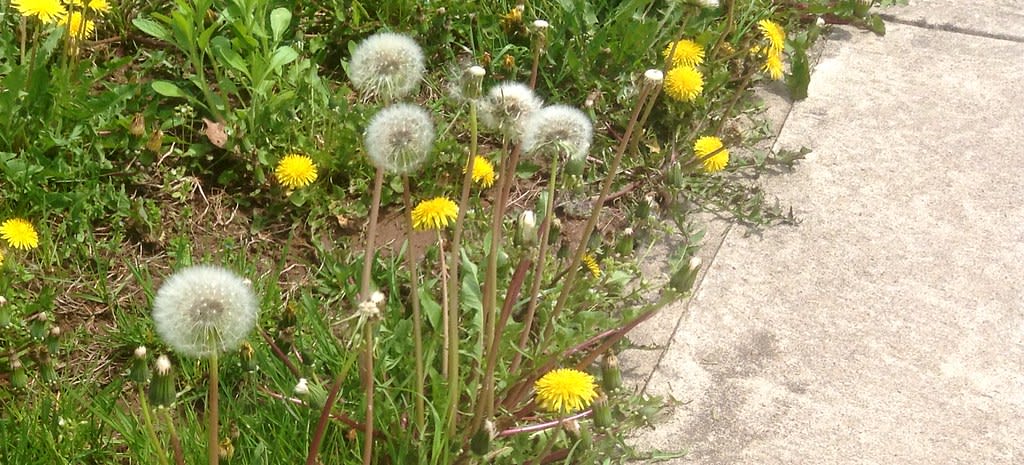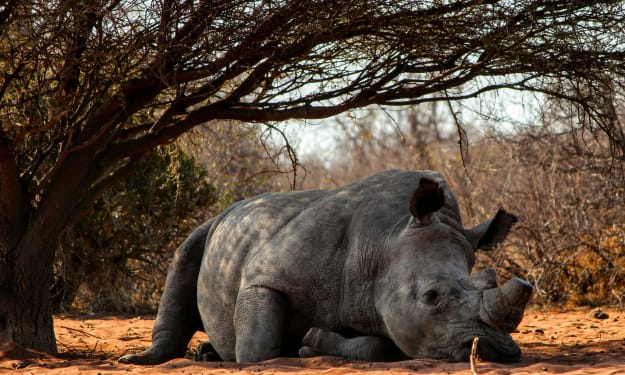
So… The world is falling apart. That’s obvious, but we can’t do anything about it... right? Well… we can. I can. You can. In our lives there is something that all of us can do to positively impact:
Our Lives
Our Neighbor’s Lives
Our Children’s Lives
And Nature as a whole.
What could have such an amazing impact? Dandelions.
They’re everywhere right? Weeds that sprout all over your once beautiful spring lawn. You know, the ones that the mower never seems to get? Those ones!
Of course not all people call them dandelions. They’ve many nicknames. I’ve prepared a list. Dudal, Blowball, Lion’s Tooth, Dent De Lion, Mole’s Salad, Piss In A Bed… well you get the picture. It’s official classification is Taraxacum Officinale. The plant itself presents across the globe and has many sub-species but all of them very similar.
Either Way...
Dandelions are somewhat of an anchor species within many ecosystems. They are one of the first spring food sources for everything from bees, to butterflies, to foxes, deer and even humans.
They originated in Eurasia but were brought by humans to India, North and South America, Australia, New Zealand, and pretty much everywhere else to some degree. Because of this, you may mark this an invasive species but even that’s not totally true. They fit well into nearly any land based ecosystem and only a few reserves globally have marked them as a threat.
The dandelion has a long tap root that plunges deep into the soil and branches off minimally. This helps to loosen the ground and bring up minerals from deep down that other plants wouldn’t have access to normally. Because of this they tend to not bother other plants with competition. They can even help fertilize grass species and because similar plants exist around the world, so many animals are well adapted to consume them.
The point is that as non-scientists, we tend to write off dandelions as harmful without learning a lot about them. One major plus is their nutritional value.
The whole plant is edible, which is somewhat of a rarity in the flora world. They contain vitamins A, C, E, and K as well as small amounts of vitamins B1, B2, B6 and B9. In addition, they are filled with tons of other goodies to complete a healthy diet. These include fiber, magnesium, potassium, calcium, iron, estrogen, copper, zinc, boron and silicon as well as several others. This is why consuming dandelions is so good for the human body, promoting organ and bone health.
Furthermore, because Vitamin C, zinc and estrogen are 3 of the 4 substances known to prevent COVID-19 infections and severity (The other being Vitamin D) It could serve as protection, when regularly consumed, from COVID-19 and other corona viruses.
Several groups already take advantage of this plant and have for centuries by making herbal remedies and tea from dried roots. It’s in fact common practice in Italy to sauté the leaves, before the plant flowers causing it and the rest of the plant to grow bitter.
Some people make salads from them, fry them, grill them, ferment them, make extracts and cakes, you name it. Some of my family’s and my favorites are dipping the stems in peanut butter, sautéing the flower bulbs (which makes them taste like corn), and sautéing the leaves with butter, salt and brown sugar.
Of course you should ask your doctor before ingesting it if you:
Have allergies to things like ragweed
Are taking medications especially diuretics, blood thinners, blood sugar modifiers and antibiotics
Are constantly dehydrated or have over urination problems
Have diabetes
Hormone Sensitive Cancer Growths
Gallbladder or Liver Issues
Or any other serious medical problem as consumption can occasionally affect specific medications and conditions.
Also avoid dandelions exposed to chemicals or large amounts of pollutants and handle raw roots with gloves.
On the flip side of food, dandelions can also be used, as I will demonstrate, to make non-toxic, natural dyes, paints and inks.
The Real Question is:
If dandelions are so good for the environment and so helpful, then why are they considered weeds?
It’s an interesting question because they aren’t really weeds at all. Most of their bad reputation comes from the fact that they are just so hard to get rid of. Anyone who owns a grassy yard or field knows that as soon as you knock one down ten will grow in its place the next day.
Even this however, can be a plus. Dandelions grow everywhere. They grow quickly and in global abundance. As mentioned above, they are very healthy and although the majority of herbal uses have little scientific backing, mostly from a lack of research, dandelions include anti-oxidants and several natural chemicals that have been shown to reduce inflammation, pain, and increase urination. Vitamin K in specific has been proven to directly increase bone density and prevent bone fractures more effectively than consuming excess calcium.
Some older estimates say that billions of dollars are used to exterminate dandelions yearly and this number has likely only increased in recent years. Yet somehow they always come back next year in full abundance. In a way, this makes them a truly renewable and undying resource.
Assuming dandelions are used in the ways mentioned above, a series of things will likely take place on a national or global level.
1. Food costs during the spring will go down because a decent part of your diet can be picked out of your or your neighbors yards. This will make it easier for the lower and working classes to gain access to food.
2. Other forms of gardening will become more normalized.
3. The cost of yellow, green and amber dyes will go down.
4. Broken bones, organ failures, the need for supplements and other health issues will become slightly less common by providing fuller diets.
5. A healthier diet also promotes exercise decreasing obesity and depression.
6. Farming fields that already grow large (and quite beautiful) quantities of dandelions before they are plowed, can be used as another form of profit for farmers, which will strengthen the economy.
7. Small stores and restaurants based around the common uses of dandelions will flourish.
8. The conservation of dandelions will become a more prevalent topic improving wildlife.
9. The use of pesticides and herbicides will decrease, cleaning up rivers, oceans and streams while making consumption of these chemicals also less common.
10. Plastic use and CO2 production will go down minutely because most dandelions would be home grown or grown locally and if sold, then by smaller companies. Because of this dandelions wouldn't require large scale processing or packaging like most commonly consumed foods.
To put it simply, dandelions can be extremely helpful in the fight against global warming and natural destruction. We unfortunately don’t live in a world where everyone is willing to change their diets or habits or even listen to the science of it all, but this topic brings an entirely new factor to the table. You've all heard speeches about safe and easy ways to help the future of our planet, well this can help us right now. Statistically people are getting poorer, more stressed and less healthy. It isn’t limited to the USA either. Dandelions however, provide an opportunity to fix all that, even in small ways.
You can change the world.
About the Creator
Enjoyed the story? Support the Creator.
Subscribe for free to receive all their stories in your feed. You could also pledge your support or give them a one-off tip, letting them know you appreciate their work.






Comments
There are no comments for this story
Be the first to respond and start the conversation.